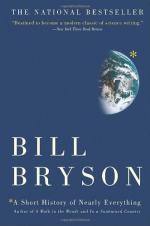|
This section contains 872 words (approx. 3 pages at 400 words per page) |

|
Part 5, Chapter 18 Summary and Analysis
The human body is made up of 65 percent water, the most common compound on Earth. It is essential for life, yet it too can be lethal, for it has very unique properties. Although it is liquid at room temperature, water expands when frozen. This means that ice floats, preventing the oceans from freezing solid forever.
All but the smallest fraction of water on Earth is poisonous to humans. Although the water in human tissues, tears and sweat is remarkably similar to salt water in composition, drinking seawater is harmful to the human body. It can cause seizures, brain damage and even death. Altogether, there is 320 million cubic miles of water in a closed system. The water world, or hydrosphere, was formed about 3.8 billion years ago. The Pacific Ocean contains 51.6 percent of the planet's water, the Atlantic 23.6 percent, and the...
(read more from the Part 5, Chapter 18 Summary)
|
This section contains 872 words (approx. 3 pages at 400 words per page) |

|




